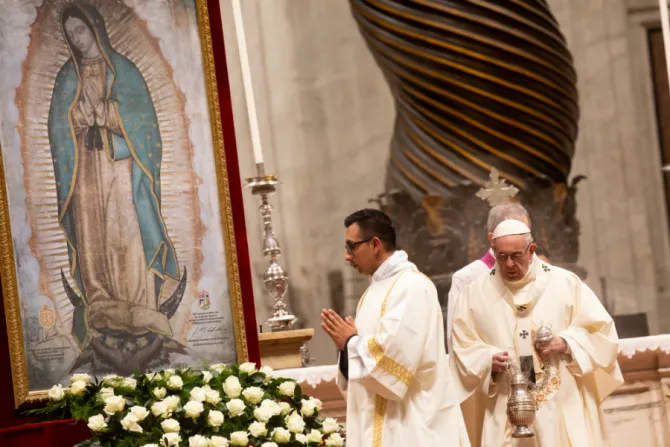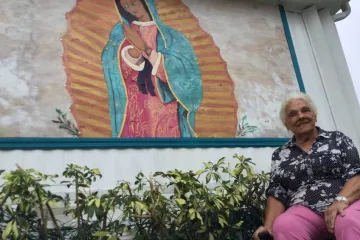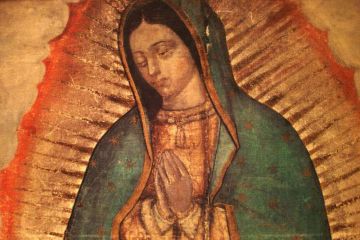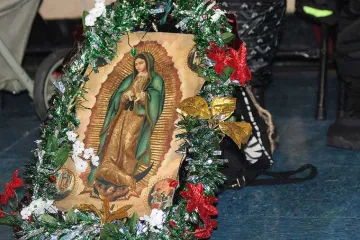Vatican City, Dec 12, 2018 / 10:37 am
Pope Francis celebrated the Mass of Our Lady of Guadalupe Wednesday, reflecting on how Mary continues to evangelize Latin America through her ubiquitous image.
As Our Lady of Guadalupe accompanied Saint Juan Diego on Tepeyac, she continues to encounter people through "an image or stamp, a candle or a medal, a rosary or a Hail Mary," Pope Francis said in his homily Dec. 12 in St. Peter's Basilica.
Through her image, Mary "enters in a home, in a prison cell, in the ward of a hospital, in a nursing home, in a school, in a rehabilitation clinic to say: 'Am I not here, that I am your mother?'" he continued in Spanish.
The pope's homily centered on Mary as a "teacher of the Gospel" through her Magnificat.
"Mary teaches us that, in the art of mission and hope, so many words and programs are not necessary. Her method is very simple: she walked and sang," Francis said.
In the school of Mary, he said, we "nourish our hearts" with the "multicultural wealth of Latin America, where we can "listen to that humble heart that beats in our villages" with "the sacredness of life."
Here, the "sense of God and his transcendence," as well as "respect for creation, the bonds of solidarity, and the joy of the art of living well" are preserved, he continued.
As her image traveled the continent, Our Lady of Guadalupe is "not only remembered as indigenous, Spanish, Hispanic or African-American. She is simply Latin American," Francis said.
Our Lady of Guadalupe, patroness of the Americas and the unborn, appeared to St. Juan Diego on the Hill of Tepeyac in Mexico City in 1531, during a time of conflict between the Spanish and the indigenous peoples.
Mary took the appearance of a pregnant native woman, wore clothing in the style of the indigenous community, and spoke to Juan Diego in a native language, Nahuatl.
She asked Juan Diego to appeal to the bishop to build a church on the site of the apparition, stating she wanted a place where she could reveal to the people the compassion of her son. Initially turned away by the bishop, Diego returned to site asking Our Lady for a sign to prove the authenticity of her message.
She instructed him to gather the Castilian roses that he found blooming on the hillside, despite the fact that it was winter, and present them to the Spanish bishop. Juan Diego filled his cloak – known as a tilma – with the flowers. When he presented them to the bishop, he found that an image of Our Lady was miraculously imprinted upon his tilma.
Nearly 500 years later, Diego's tilma with the miraculous image is preserved in the Basilica of Our Lady of Guadalupe, and visited by millions of pilgrims each year.
Our Lady of Guadalupe is a "mother of a fertile and generous land in which all, in one way or another, can find ourselves playing a leading role in the construction of the Holy Temple of the family of God," Francis said.






